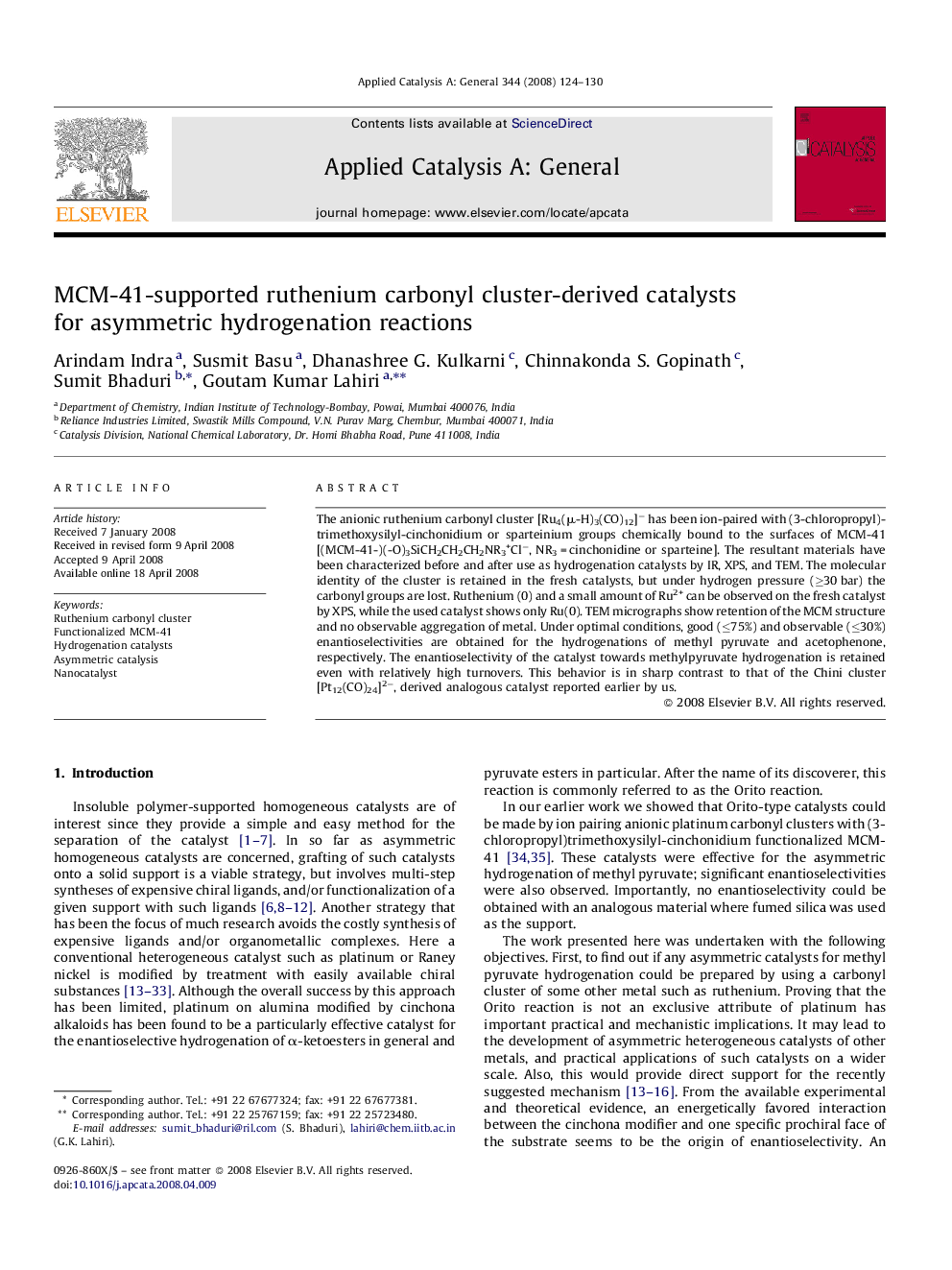| Article ID | Journal | Published Year | Pages | File Type |
|---|---|---|---|---|
| 43108 | Applied Catalysis A: General | 2008 | 7 Pages |
The anionic ruthenium carbonyl cluster [Ru4(μ-H)3(CO)12]− has been ion-paired with (3-chloropropyl)trimethoxysilyl-cinchonidium or sparteinium groups chemically bound to the surfaces of MCM-41 [(MCM-41-)(-O)3SiCH2CH2CH2NR3+Cl−, NR3 = cinchonidine or sparteine]. The resultant materials have been characterized before and after use as hydrogenation catalysts by IR, XPS, and TEM. The molecular identity of the cluster is retained in the fresh catalysts, but under hydrogen pressure (≥30 bar) the carbonyl groups are lost. Ruthenium (0) and a small amount of Ru2+ can be observed on the fresh catalyst by XPS, while the used catalyst shows only Ru(0). TEM micrographs show retention of the MCM structure and no observable aggregation of metal. Under optimal conditions, good (≤75%) and observable (≤30%) enantioselectivities are obtained for the hydrogenations of methyl pyruvate and acetophenone, respectively. The enantioselectivity of the catalyst towards methylpyruvate hydrogenation is retained even with relatively high turnovers. This behavior is in sharp contrast to that of the Chini cluster [Pt12(CO)24]2−, derived analogous catalyst reported earlier by us.
Graphical abstractUnder optimal conditions the hydrogenations of methyl pyruvate and acetophenone by 1 give enantioselectivities of ≤75% and ≤30%, respectively. The enantioselectivity of 1 towards methyl pyruvate hydrogenation is retained even with a relatively high turnover. Figure optionsDownload full-size imageDownload as PowerPoint slide
